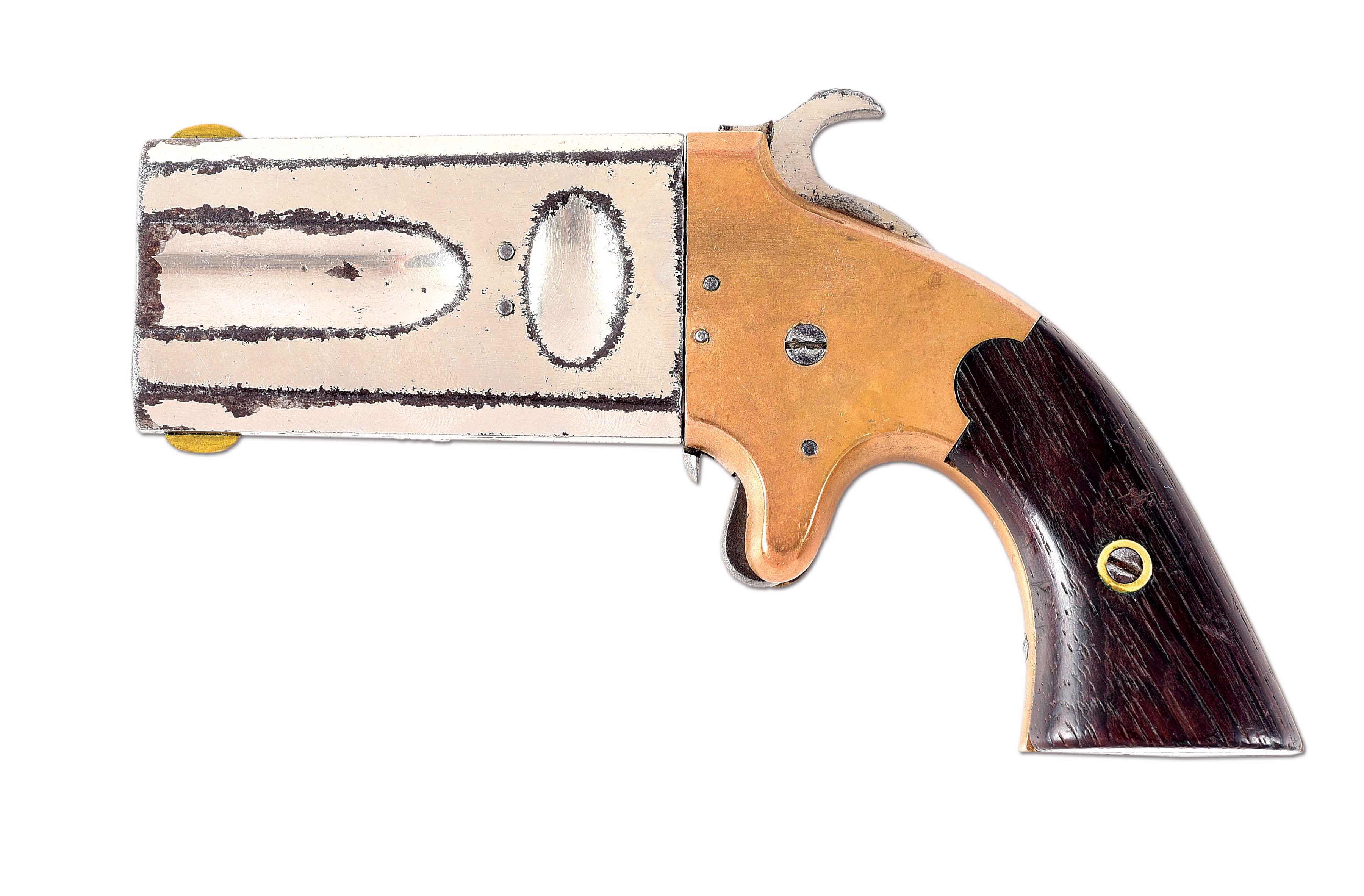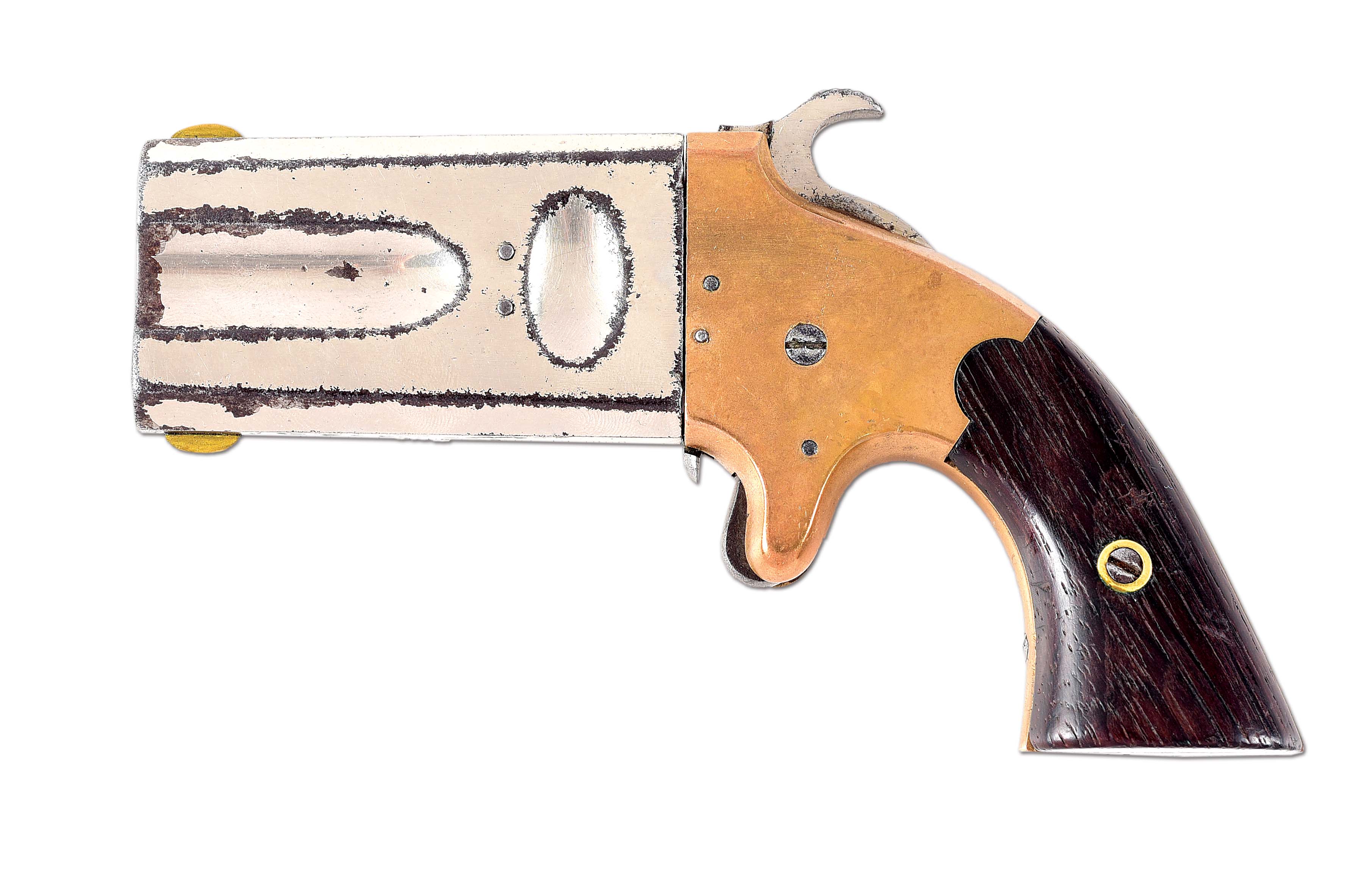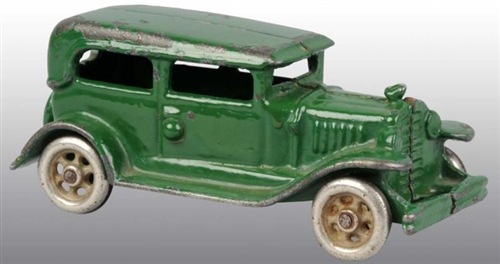A rare American nickel plated brass carrousel carriage timepiece with duplex escapementClock Company, circa 1880 The movement with monometallic balance and three-wheel train set within a circular rotating carriage with pierced plates which revolves once an hour via a 'walking' eight leaf pinion around a fixed centre wheel, the drive provided by a large standing barrel containing long mainspring mounted on the backplate with winding turn to the rear, the movement frontplate pierced to reveal the rotating carriage within applied paper Roman numeral chapter ring and with monogram trademark incorporating inscription PAT. MAY 21 1878 to lower margin, the case with ring-turned handle to the cushion moulded top above bevel-glazed front door and side panels, on cavetto moulded base with rounded angles, 11cm (4.25ins) high excluding handle; with a copy of Allix, Charles and Bonnert, Peter CARRIAGE CLOCKS Their history and development Antique Collectors' Club, Woodbridge 1974, first edition, dj, (2). ingenious rotating carousel design for the movement of the current lot was devised from a patent submitted by D.A. Buck of Worcester, Massachusetts in 1878 with the intention to produce a reliable timekeeper from the least possible parts. The mechanism was first employed by Waterbury in their 'long wind watch' before being used in carriage timepieces (with a much larger spring barrel to increase the duration to eight-days) from the early 1880's. The design and layout of the this type of carriage timepiece (including train counts) is described (in great detail) in Allix, Charles and Bonnert, Peter CARRIAGE CLOCKS Their history and development pages 360-6. IMPORTANT NOTES REGARDING THE CATALOGUING OF CLOCKS Movements, dials and cases: movements and dials are described as relating to the cases in which they are housed in one of the following three ways: the case.... we are of the opinion that the movement and dial started life in the current case. in a case... we are of the opinion that the movement and dial are in a case of correct period and type (and may well be original to the movement and dial), however there is evidence to suggest that they may not have started out life together. now in a case... we are of the opinion that the movement and dial are no longer in the original case or one of correct period and/or type. , weights, winding and case keys: unless specifically indicated otherwise in the catalogue description it can be assumed that all clocks with cases are sold with the requisite pendulum and correct number of weights (where appropriate), however we cannot guarantee that they are original to the clock. We do not indicate in the catalogue description whether winding or case keys are present with any specific clock. As many clocks are consigned without keys please check with the department to establish whether they are present or not prior to bidding. : due to the mechanical nature of clocks and the fact that most are of great age we cannot offer any guarantee as to whether they are in working order or free from major faults or restoration. Although we endeavour to catalogue items in a fair and informed manner, omission of any comments or observations regarding the condition or originality of a clock in the description does not necessarily indicate that it is free from significant faults, restoration or is in working condition. We would strongly advise any prospective purchaser to view the item in person or request a condition report and/or further images prior to bidding. : dial measurements are given in inches, other dimensions such as height are given in centimetres and inches. The measurement given for the height of a longcase clock excludes any removable finials in order to provide an approximate minimum ceiling height in which the clock can be accommodated.
A rare American nickel plated brass carrousel carriage timepiece with duplex escapementClock Company, circa 1880 The movement with monometallic balance and three-wheel train set within a circular rotating carriage with pierced plates which revolves once an hour via a 'walking' eight leaf pinion around a fixed centre wheel, the drive provided by a large standing barrel containing long mainspring mounted on the backplate with winding turn to the rear, the movement frontplate pierced to reveal the rotating carriage within applied paper Roman numeral chapter ring and with monogram trademark incorporating inscription PAT. MAY 21 1878 to lower margin, the case with ring-turned handle to the cushion moulded top above bevel-glazed front door and side panels, on cavetto moulded base with rounded angles, 11cm (4.25ins) high excluding handle; with a copy of Allix, Charles and Bonnert, Peter CARRIAGE CLOCKS Their history and development Antique Collectors' Club, Woodbridge 1974, first edition, dj, (2). ingenious rotating carousel design for the movement of the current lot was devised from a patent submitted by D.A. Buck of Worcester, Massachusetts in 1878 with the intention to produce a reliable timekeeper from the least possible parts. The mechanism was first employed by Waterbury in their 'long wind watch' before being used in carriage timepieces (with a much larger spring barrel to increase the duration to eight-days) from the early 1880's. The design and layout of the this type of carriage timepiece (including train counts) is described (in great detail) in Allix, Charles and Bonnert, Peter CARRIAGE CLOCKS Their history and development pages 360-6. IMPORTANT NOTES REGARDING THE CATALOGUING OF CLOCKS Movements, dials and cases: movements and dials are described as relating to the cases in which they are housed in one of the following three ways: the case.... we are of the opinion that the movement and dial started life in the current case. in a case... we are of the opinion that the movement and dial are in a case of correct period and type (and may well be original to the movement and dial), however there is evidence to suggest that they may not have started out life together. now in a case... we are of the opinion that the movement and dial are no longer in the original case or one of correct period and/or type. , weights, winding and case keys: unless specifically indicated otherwise in the catalogue description it can be assumed that all clocks with cases are sold with the requisite pendulum and correct number of weights (where appropriate), however we cannot guarantee that they are original to the clock. We do not indicate in the catalogue description whether winding or case keys are present with any specific clock. As many clocks are consigned without keys please check with the department to establish whether they are present or not prior to bidding. : due to the mechanical nature of clocks and the fact that most are of great age we cannot offer any guarantee as to whether they are in working order or free from major faults or restoration. Although we endeavour to catalogue items in a fair and informed manner, omission of any comments or observations regarding the condition or originality of a clock in the description does not necessarily indicate that it is free from significant faults, restoration or is in working condition. We would strongly advise any prospective purchaser to view the item in person or request a condition report and/or further images prior to bidding. : dial measurements are given in inches, other dimensions such as height are given in centimetres and inches. The measurement given for the height of a longcase clock excludes any removable finials in order to provide an approximate minimum ceiling height in which the clock can be accommodated.















Try LotSearch and its premium features for 7 days - without any costs!
Be notified automatically about new items in upcoming auctions.
Create an alert